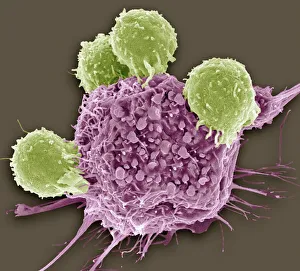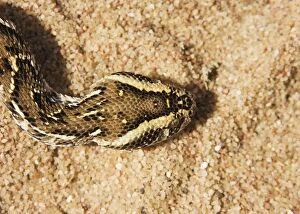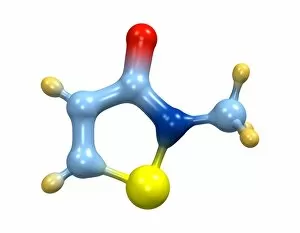Cytotoxic Collection
Caption: In this captivating image series, we delve into the world of cytotoxicity, a phenomenon that holds immense potential in the fight against cancer
All Professionally Made to Order for Quick Shipping
Caption: In this captivating image series, we delve into the world of cytotoxicity, a phenomenon that holds immense potential in the fight against cancer. The images showcase the intricate interplay between T lymphocytes and cancer cells, revealing the battle at a microscopic level. Picture No. 10761368 presents an awe-inspiring view of T lymphocytes (also known as T cells) engaging with cancer cells. These specialized white blood cells play a crucial role in our immune system's defense against malignancies. Their ability to recognize and eliminate abnormal or infected cells is vital for maintaining overall health. SEM C001 / 1679 provides us with a closer look at this dynamic interaction. The high-resolution scanning electron microscope image reveals the distinct morphology of both T lymphocytes and cancer cells, highlighting their contrasting features and emphasizing their opposing roles in tumorigenesis. Further exploration leads us to Picture No. 10761366, where we encounter cisplatin drug molecules – potent chemotherapeutic agents widely used in treating various cancers. These compounds disrupt DNA replication within rapidly dividing cancerous cells, impeding their growth and ultimately leading to cell death. The significance of cisplatin becomes even more apparent when observing its molecular structure depicted again in subsequent images (Cisplatin drug molecule). Its complex arrangement underscores its effectiveness as an anticancer agent while also reminding us of ongoing research aimed at enhancing its therapeutic properties. Amidst these scientific revelations lies another intriguing aspect - Methylisothiazolinone preservative C016 / 8098, showcased through multiple images (Methylisothiazolinone preservative C016 / 8097-8095). This compound finds application not only as a preservative but also exhibits cytotoxic effects on certain types of human skin cells when used improperly or excessively.













